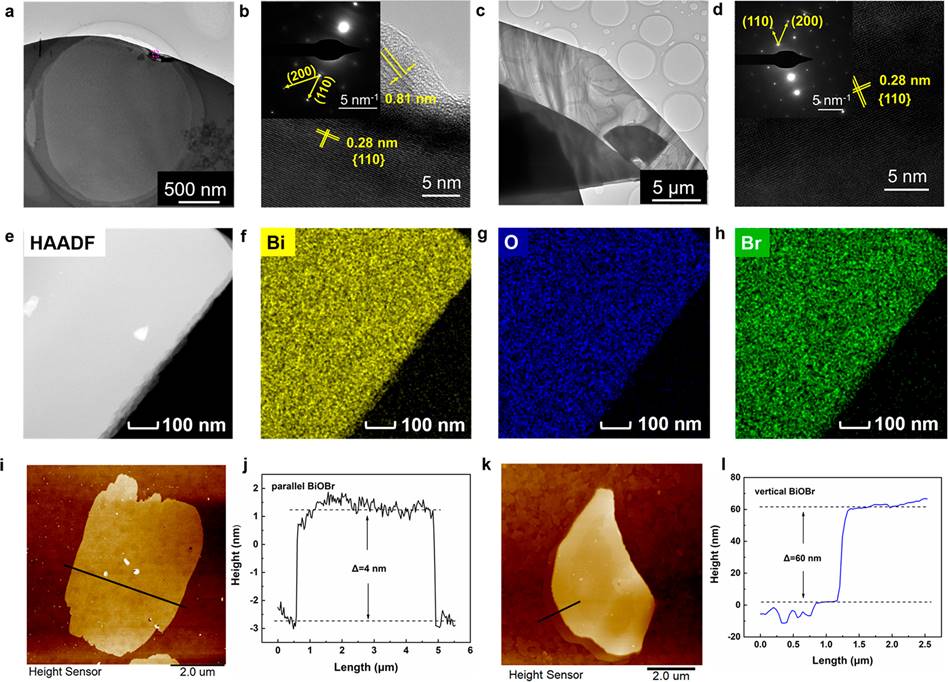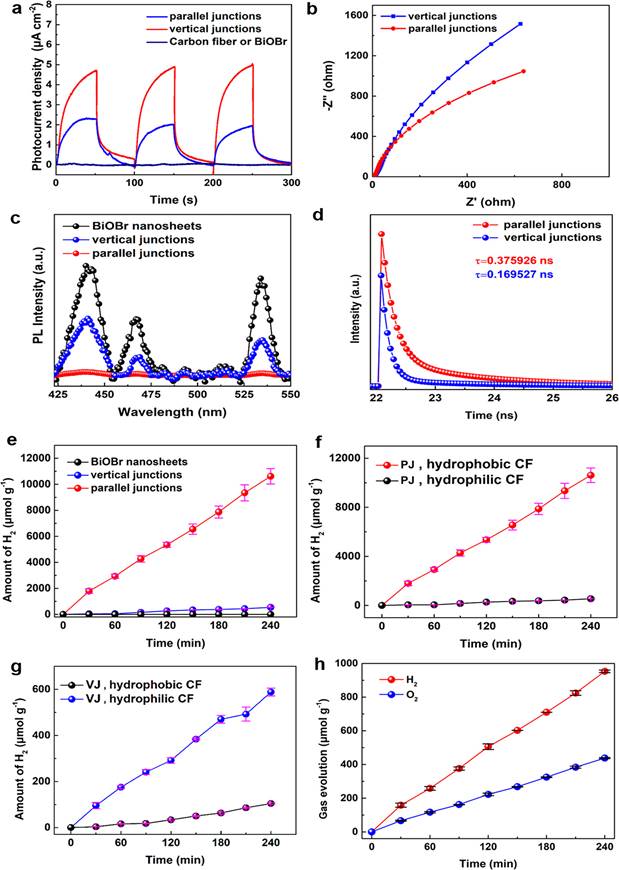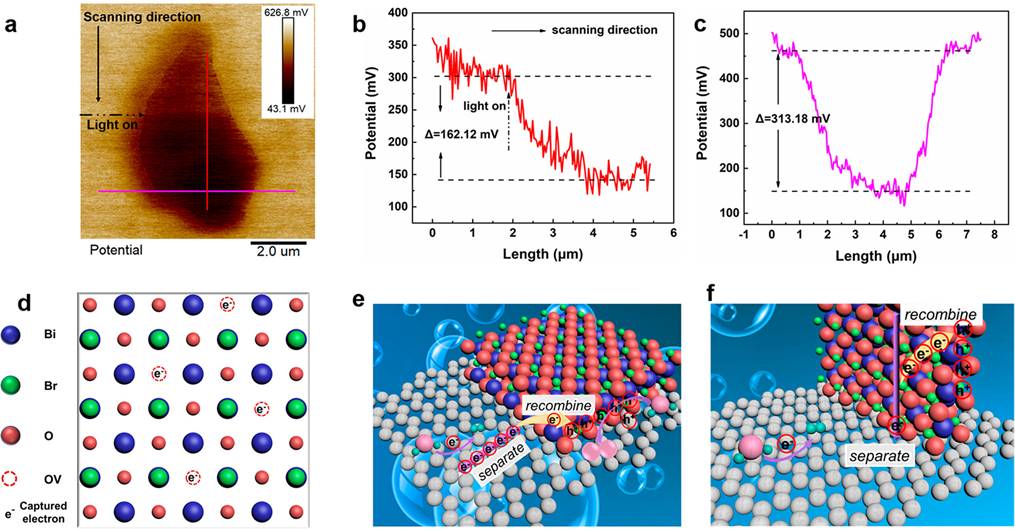In recent years, ternary two-dimensional layered materials have attracted great attention of researchers in the field of materials science because of their unique band structure and physical-chemical properties. BiOX (X=Cl, Br, I, etc.) is a class of typical graphene-like ternary two-dimensional layered semiconductors, among which BiOBr has shown potential application prospects in photocatalytic degradation and sewage treatment. However, due to the morphology and energy band structure of BiOBr, its performance of photocatalytic decomposition of water for hydrogen production is poor. Additionally, the rapid recombination of photogenerated carriers also seriously restricts the efficiency of hydrogen production for BiOBr.
In view of this problem, Professor Liping Feng et al, from the Key Laboratory of Solidification, constructed a composite structure of ultra-thin two-dimensional BiOBr nanosheets and carbon fibers (CFs), and proposed a new idea to change the transmission path of photogenerated carriers and reduce the recombination of photogenerated carriers by changing the contact form between BiOBr nanosheets and CFs. In this scheme, by adjusting the preparation process of CVD, two-dimensional BiOBr nanosheets and CFs can present two completely different contact forms, namely, BiOBr nanosheets lying flat on CFs (BiOBr/C parallel junctions) or BiOBr nanosheets vertically inserted on CFs (BiOBr/C vertical junctions). The study shows that Schottky contact is formed between two-dimensional BiOBr nanosheets and CFs, and both parallel and vertical junctions have appropriate conduction band positions, which meets the thermodynamic requirements of photocatalytic decomposition of water for hydrogen production. Particularly, the parallel junctions have higher photocarrier yield and longer lifetime of electron-hole pair, and thus H2 production rate of the parallel junctions is up to 2850 μmol h-1g-1, which is 18 times that of the vertical junctions. Furthermore, the parallel junctions also show excellent characteristics of overall water splitting, and the H2 and O2 production rates are 240 μmol h-1g-1 and 110 μmol h-1g-1, respectively. In this work, the separation and transport characteristics of photogenerated carriers in two heterojunction systems are systematically analyzed. The whole process was demonstrated including photocarrier generated from two-dimensional BiOBr, separated and enriched to (001) crystal plane, and then transported to the active site of CFs by Schottky barrier. The influence mechanism of heterojunction morphology on carrier transport and catalytic performance is revealed, which provides a new solution to effectively reduce the recombination of photogenerated carriers in two-dimensional BiOBr.
The work was published in the international journal ACS Nano (DOI: 10.1021/acsnano.1c02884), under the title: “High Carrier Separation Efficiency in Morphology Controlled BiOBr/C Schottky Junctions for Photocatalytic Overall Water Splitting”. The first author of this study is Xiaoqi Zheng, PhD student of the State Key Laboratory of Solidification Technology, and the corresponding authors are Professor Liping Feng, the State Key Laboratory of Solidification Technology and Professor Jun He, Wuhan University. This work was financially supported by the National Natural Science Foundation of China (No. 62074130), and the Research Fund of the State Key Laboratory of Solidification Processing (NPU) under grant No. 2021-TS-09. The Analytical & Testing Center of Northwestern Polytechnical University is acknowledged for providing facilities of test.
Guide reading

Figure 1. Characterization of morphology and structure.
Figure 2. Determination of band edge region.
Figure 3. Photocatalytic properties of the parallel and
s.
Figure 4. Study on mechanism.

★Zheng, X.; Feng, L.; Dou, Y.; Guo, H.; Liang, Y.; Li, G.; He, J.; Liu, P.; He, J., High Carrier Separation Efficiency in Morphology-Controlled BiOBr/C Schottky Junctions for Photocatalytic Overall Water Splitting. ACS Nano 2021, 15 (8), 13209-13219.
The link to the paper: https://doi.org/10.1021/acsnano.1c02884
Writer:Liping Feng
Check:Wei Liu、Hongqiang Wang